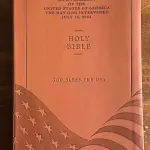“Nobody seemed to know where they came from,” these strangers to the 100 Aker Wood. Rabbit was worried, “We find a Strange Animal among us. An animal of whom we have never even heard before! An animal who carries her family about with her in her in her pocket!” If they stay, no doubt, Rabbit thinks, hordes will flow into the 100 Aker Wood. In his mind, they will overrun the Wood, they’ll change our lives, they may even harm us!
They have strange names – Kanga and Roo – and we must get them out of the Wood as soon as possible. What if we were “to steal Baby Roo and hide him” and then when Kanga asks for her whereabouts, our response will be “We’ll tell you where Baby Roo is, if you promise to go away from the Forest and never come back.” Rabbit hatched a plan, and though he was the one who was anxious about these invaders, infesting the Wood, everyone went along.
As the plan goes, Piglet jumps into Kanga’s pocket while Roo is lured away. Separation at the border of the Wood. Needless to say, Kanga finds out, plays along with the ruse, acting as if Piglet is her son. The plan fails, Rabbit and Roo like each other, and all is well that ends well. “So Kanga and Roo stayed in the Forest. And every Tuesday Roo spent the day with his great friend Rabbit, and every Tuesday Kanga spent the day with her great friend Pooh, teaching him to jump, and every Tuesday Piglet spent the day with his great friend Christopher Robin. So they were all happy again.” Crisis ended. Anxiety diminished. Strangers welcomed as productive companions.
These past few weeks I’ve been thinking about this story from Winnie the Pooh. It sounds familiar, doesn’t it? An anxious leader is worried about Strangers from Beyond the Border. He marshals the forces of his community. They separate mothers from their children. The only difference: in one case, there’s a happy ending; in the other, the future is still muddled. In one case, the child returns unscathed; in the other, there are tears, anxiety, trauma, perhaps, trauma that will last a lifetime. In one case, there is play; in the other prison. One is fiction, the other fact, though facts based on the fictional narrative of a false crisis, created by an apparently fearful and manipulative leader.
“The Gospel According to Winnie the Pooh,” and the “Gospel of Jesus Christ” invite us to tell another story. Of course, not everyone can come into the Wood. It is a delicate ecosystem, and can’t handle the machinations of Certain Strangers, most especially real estate developers, hotel magnates, golf club designers, and mineral speculators, and folks who like to put their names of buildings; but the Wood can handle strangers with good spirits and the willingness to get along regardless of where they come from.
As we watch a national tragedy unfolding, a tragedy of inhumanity, moral bankruptcy, and dehumanization, a few stuffed animals can’t save us from our nation’s ethical waywardness and faux anxiety but finding another storyline can provide a way forward. Stuffed animals are often smarter than politicians and often more compassionate than televangelists. They don’t double down or perpetuate lies – even in the name of God – they show us that mature and compassionate people can admit their mistakes (not double down with polarizing rhetoric), turn around and choose another path.
Stuffed animals don’t necessarily provide public policy answers, but they do show us how to respond – with empathy, with forgiveness, and reconciliation – even when we’ve made a Bad Mistake, like Rabbit and the gang. They show us that we can chart a new path in which Strangers become New Friends, and love replaces fear as our nation changes direction, guided by the better angels of our nature. We can re-write the story, we can be Better People, we can imagine and then create an alternative future.












